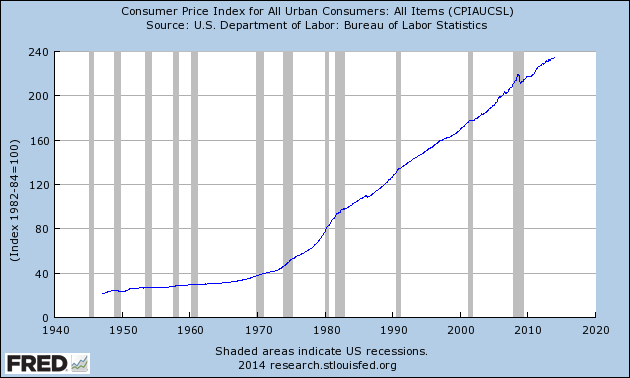Earnings valuations on Wall Street for 2014 are right now falling in a range of $118-121 for the S&P 500. Our work suggests a range of $117-120 for the year. We will start with a mid-point of $118.75 to and adjust as the year goes forward. We will also start giving our four quarter forward guidance as the markets seem to be increasingly focused on that metric.
I think we will see further evidence over the course of this year of economic acceleration in the US and developing economies around the world. I also think that we will see stabilization in certain emerging markets by year end as well. The 10 year Treasury bond trades with a 2.83% yield which I think could go up to 3.25-3.75% by year end with a 3.50% midpoint. Given these hypotheses, I think it is possible that stocks could trade with a 15.5-16.5 PE on the overall market. As such here are the metrics we are using on a going forward basis based on our earnings models.
Valuation @ $117 EPS, S&P 500 with a 15.5 PE:
1,1814-1,850 S&P 500, 2.10% Dividend Yield S&P 500, 6.4% EPS Yield.
Valuation @ 118.75 EPS, S&P 500 with a 16 PE:
1,900-1,950 S&P 500, 1.95% Dividend Yield S&P 500, 6.2% EPS Yield.
Valuation @ 120 EPS, S&P 500 with a 16.50 PE:
1,980-2,050 S&P 500, 1.85% Dividend Yield S&P 500, 5.9% EPS Yield.
Best Guess Scenario:
1,925 S&P 500 1.95% Dividend Yield, 6.22% EPS Yield.
One other point. Probability analysis leads me to think that we will see at least one decline this year in the market in the 10-20% range. It's been a long time since we've seen something like this. Probability suggests that since normal market volatility is somewhere close to 10%, it is reasonable to suggest that we could revert to the mean at some point this year.
Markets are closed Monday in celebration of Martin Luther King Day. Our next post will be Tuesday.
*Note: The above valuation assumptions are a series of probabilities & not guarantees. We do this exercise to help us with our framework in developing an investment view for the next 12 months. Nothing here should suggest that any of these scenarios will in fact come to fruition. It is entirely possible that stocks could do something completely different than what we have shown above including showing losses over the next year. Do not use these assumptions without doing your own homework, discussing these scenarios with your advisor or better yet hiring us!
**Long ETFs related to the S&P 500 in client and personal accounts.























